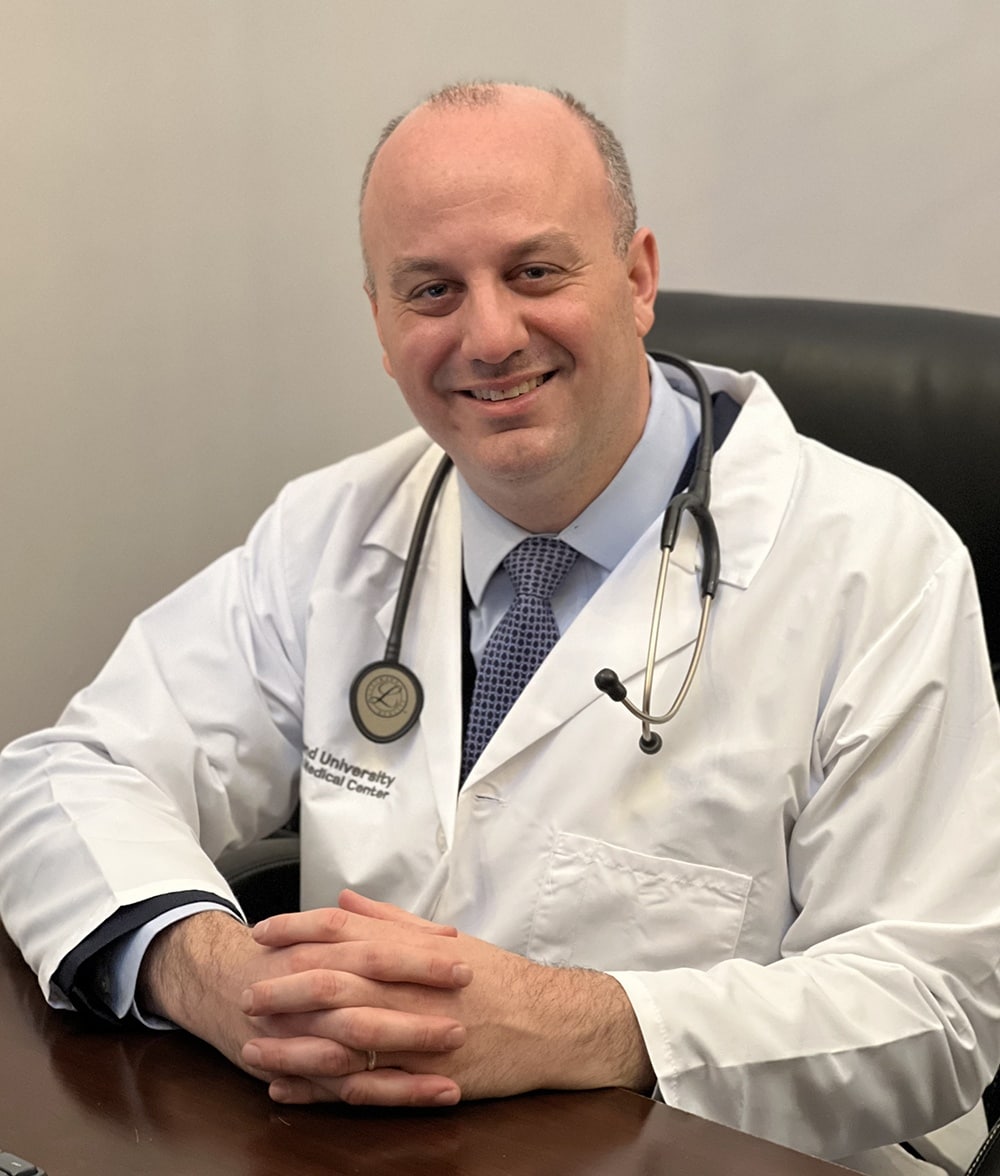With over 34 million Americans suffering from diabetes and another 88 million adults — roughly one in three — classifying as pre-diabetic, diabetes is an epidemic in the U.S. and of particular concern on Staten Island. In the following interview, Philip Otterbeck, MD, chair of medicine and chief of endocrinology at Richmond University Medical Center on Staten Island, shares the latest trends in diabetes on Staten Island, current treatments for the disease, and early signs that diabetes could be affecting a person’s eyes/vision.
What is diabetes and what can be its long-term effects?
 Dr. Otterbeck: Diabetes is a disease related to the processing of sugar in the blood which results in the body’s inability to maintain glucose levels within a normal range. Type 1 diabetes is an autoimmune disease in which the body creates antibodies that attack the insulin-producing cells of the pancreas. Type 2 diabetes is a disease of insulin resistance, and, due to genetics and dietary habits, those with Type 2 diabetes require more insulin production to keep their glucose levels in the normal range. If left untreated, an individual with diabetes could eventually suffer from nerve damage/neuropathy, kidney damage, vision problems, stroke, heart attack and peripheral vascular disease (blockages in the arteries in the lower extremities). As a result, diabetes shouldn’t be left unaddressed.
Dr. Otterbeck: Diabetes is a disease related to the processing of sugar in the blood which results in the body’s inability to maintain glucose levels within a normal range. Type 1 diabetes is an autoimmune disease in which the body creates antibodies that attack the insulin-producing cells of the pancreas. Type 2 diabetes is a disease of insulin resistance, and, due to genetics and dietary habits, those with Type 2 diabetes require more insulin production to keep their glucose levels in the normal range. If left untreated, an individual with diabetes could eventually suffer from nerve damage/neuropathy, kidney damage, vision problems, stroke, heart attack and peripheral vascular disease (blockages in the arteries in the lower extremities). As a result, diabetes shouldn’t be left unaddressed.
What trends are you seeing when it comes to diabetes on Staten Island?
Dr. Otterbeck: Nationally, the incidence of diabetes is 11%, and while the rate of 7% in Manhattan is well below the national average, the rate of diabetes on Staten Island is significantly higher at 13%. This is partially linked to the fact that, while there’s a tendency to walk more and run errands without the benefit of a car in Manhattan, Staten Island is more of a suburban community where life revolves around our cars to go to stores, schools and even the park. Fewer steps in a day equates to less activity/fewer calories burned and a higher risk of diabetes. Unfortunately, the rate of diabetes both here and nationwide is projected to increase as the population ages and the rate of obesity increases.
What are the latest treatments for diabetes?
Dr. Otterbeck: There are many pills and injectable medications for diabetes and all work differently on different systems of the body; some involve insulin and others don’t. Many of the diabetes drugs advertised on TV are injectable, non-insulin-based medications that stimulate the body to process sugar more effectively and make insulin. There are people for whom specific drugs are indicated — such as medications that address glucose metabolism and prevent cardiac events for those with heart disease, a class of drugs known as SGLT2 inhibitors, which lower sugar, provide cardiovascular benefits, and help protect the kidneys, and another drug that addresses blood sugar metabolism while also promoting weight loss by impacting the hypothalamus (the appetite center of the body). Overall, certain drugs are prescribed to help address specific medical issues.
What are signs that diabetes may be affecting someone’s vision?
Dr. Otterbeck: Diabetes/high blood sugar causes problems from head to toe, including microvascular complications such as neuropathy (damage to the nervous system), retinopathy and nephropathy (deterioration of kidney function). Retinopathy — or damage to the blood vessels in the tissue at the back of the eye (retina) — is a feared complication of diabetes because the effect can be permanent. Treatments can decrease the progression of retinopathy, but the key is to prevent it so that patients don’t lose their vision and become blind. Once diagnosed, however, treatments to slow the progression of diabetic retinopathy include measures taken to control blood sugar overall as well as injections into the eye and laser treatments. Blurred vision, floaters and obstructed vision can all be signs that one’s vision has been affected by diabetes; a dilated eye exam will help determine if diabetes has affected eye health/function and can often diagnose retinopathy among those with no symptoms.
Finally, how can Richmond University Medical Center help?
Dr. Otterbeck: Diabetes is often identified by primary care doctors and can be effectively treated at that level; more advanced cases will be referred to Richmond University Medical Center’s large endocrinology division. We have board-certified ophthalmologists on-site who are able to screen for, identify and treat patients who develop diabetic retinopathy. Overall, the prevention of diabetes should be the goal and a healthy lifestyle that involves a low-calorie, low-carb diet and cardiovascular exercise several times a week will go a long way toward preventing diabetes. Once diagnosed, however, people shouldn’t view diabetes as an uncontrollable illness; it can be controlled through the triple approach of diet modification, exercise and appropriate medical therapy.
Richmond University Medical Center is located at 355 Bard Ave. on Staten Island and can be reached at 844-934-CARE or by visiting rumcsi.org.
— Susan Bloom




